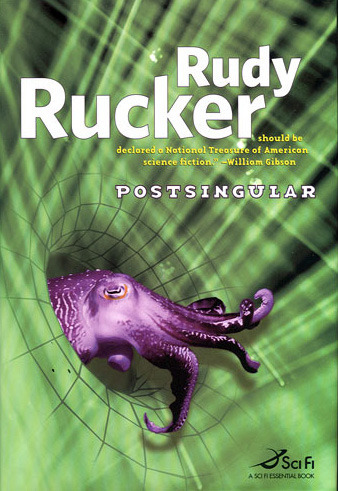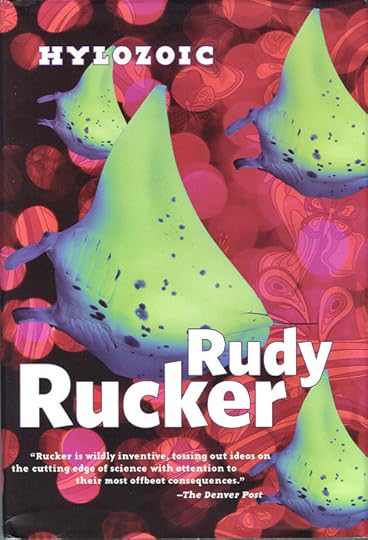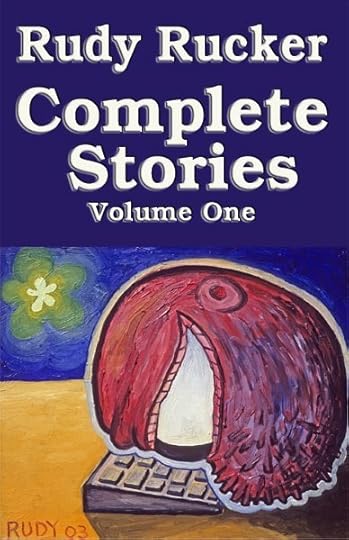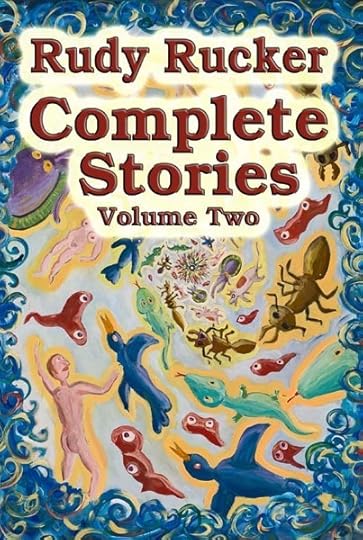Rudy Rucker's Blog, page 41
July 28, 2012
Transrealism Interview With Leon Marvell
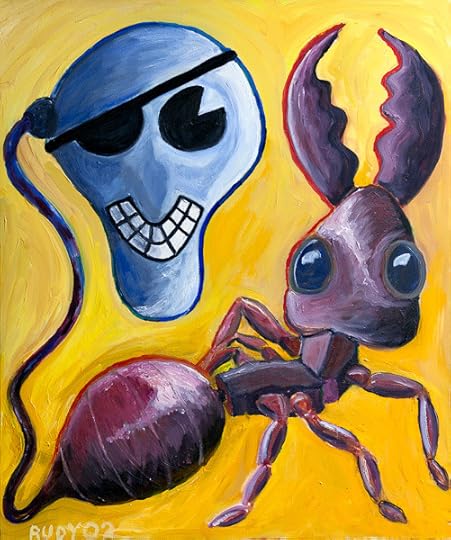
My scholarly friend Leon Marvell has been visiting from Melbourne, Australia. Today he made a video of us in conversation, with an eye to editing the material in weird ways later on—the video not yet available. I made an audio tape into a podcast The topics were my novel, The Turing Chronicles, self-pubishing and transrealism. Click on the icon below to access the podcast via my Feedburner podcast station.
(Note that Feedburner only shows my most recent podcasts. For older audio files, see my archive on Gigadial, which runs back to 2005.)

And here’s Leon himself. Trained as an art historian, Leon now teaches film and media studies. Two years ago, Leon and I gave a talk on “Lifebox Immortality,” see my Lifebox page for more info and for a link to the paper. Leon studies art history, but now teaches film and meadia art, and is intersted in esotericism. His best-known work is his book, Transfigured Light: Philosophy, Science, and the Hermetic Imaginary.
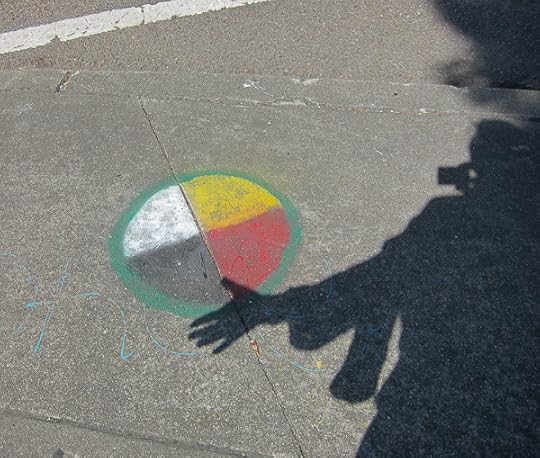
Before he arrived, I found a two-dimensional mandala on the sidewalk.
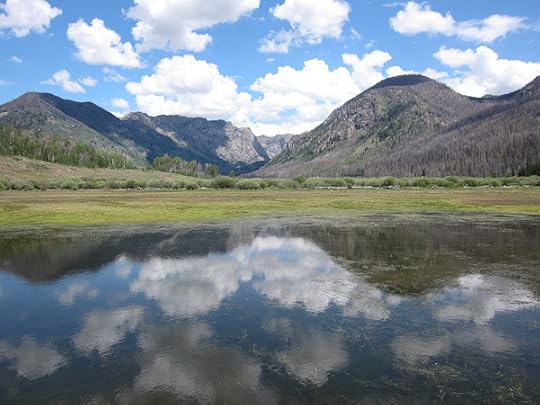
As I mentioned, my wife and I were on a road trip through the Wild West earlier this month, and I’m going to start posting some images from that. Here’s a nice picture taken at the upper New Fork Lake near Pinedale, Wyoming. I love the wiggle of the mountains and the clouds in the water. As above, so below.
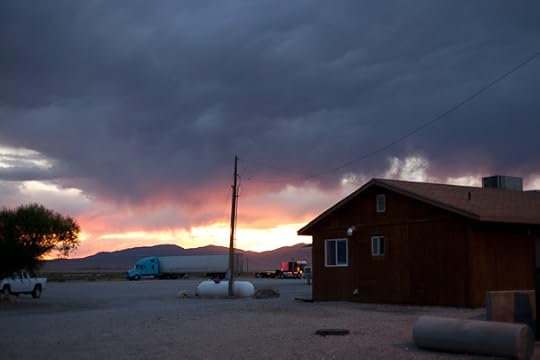
On the way out there we spent a night at the Border Inn on the line between Utah and Nevada. Saw a glorious Western desert sunset. In this photo, I’m standing in Utah and the buildings are in Nevada. The dinner cost $20, and I won $20 on a slot machine. The room was like a storage locker with a bed and an air-conditioner. A pleasant place nonetheless.
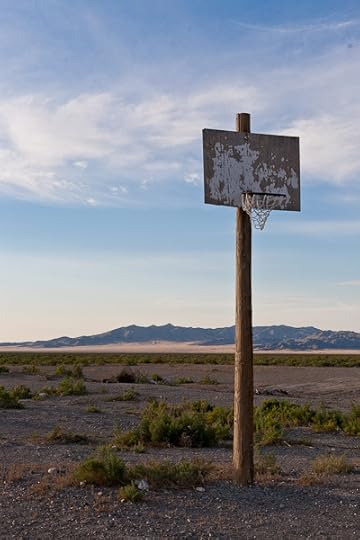
With a solitary basketball hoop in the desert.
Exciting to be so far off the grid.
July 20, 2012
Reading “I Arise Again” At Borderlands
My wife and I have been on a road trip out to Wyoming and back. I’ll post some of my pictures over the next week or two.
But first I have a short announcement. On Saturday July 21, I’ll be reading a brand new transreal short-short story called, “I Arise Again”. It’ll take about ten minutes and will be, in a sense, a performance piece relating to my recent difficulties in getting published. The story’s about a beatnik SF writer who finds a new way of distributing his work…
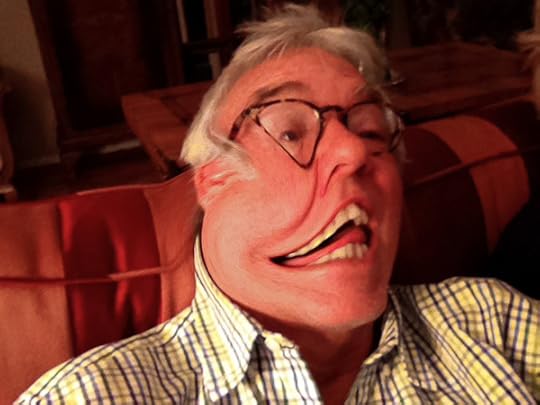
My appearance is part of the Clarion West Fundraiser Reading at Borderlands Books on Saturday, July 21st at 5:00 pm. I’ll be reading with authors Cassie Alexander, An Owomoyela, Tim Pratt, Rachel Swirsky, and Ysabeau S. Wilce. Details on the Borderlands Events page.
The event will be in the new Borderlands Café, and it should be fun. If all goes well, I’ll be taping my reading to post as a podcast here in a few days, and I may post the story as well.
July 4, 2012
“God’s Eye” and My Paintings
Last week I finished a new painting, God’s Eye.
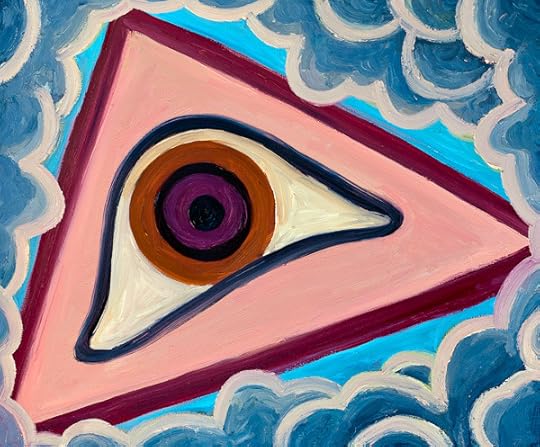
“God’s Eye,” oil on canvas, June, 2012, 24” x 20”. Click for a larger version of the image.
More about “God’s Eye” below, but first let’s talk about my art sale. I’m painting at a good rate, about one a month, and my storage space is getting full.

So I’m running an art sale through July and into August. You can check out the individual works and the sale price-list at my paintings page. And note that you can buy prints via this page as well.
Here’s an overview image of my paintings.
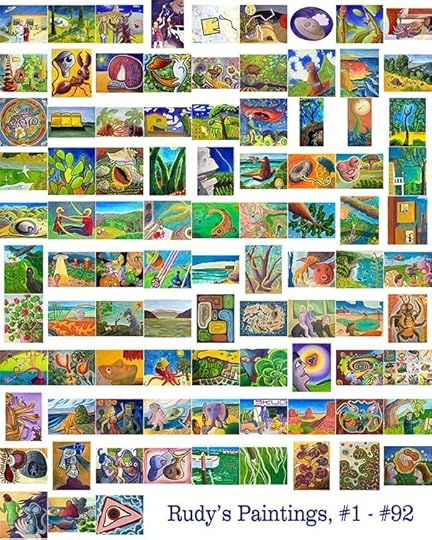
Click for a larger version of the image.
Each of the paintings is signed, of course. Generally I paint the edges of the canvas so it can hang unframed, and I put my signature on the edge, as shown below.
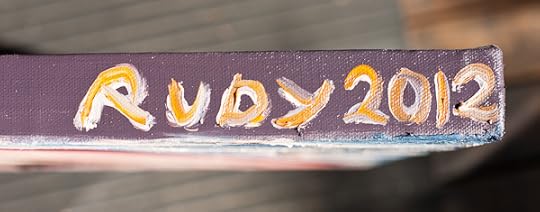
Coming back to “God’s Eye,” I’ve always been intrigued by a certain image that one sees in old European churches—an eye inside a triangle. This icon also appears, of course, on the dollar bill. It’s meant to represent the all-seeing eye of God or perhaps the divine light within every object. In researching my novels with Bruegel and Bosch as characters, I got the impression that medieval people really did think God was watching them. So here I’ve painted the eye as looking down through clouds—like a spy-satellite. I made the “skin” in this image pink as a kind of joke on the fact that God is sometimes visualized as an old white man. What expression does the eye seem to have? I’d say it looks engrossed, with a possibility of becoming judgmental.

[Ebook cover.]
Still on the art promo front, I’ve made ebook and paperback versions of my art book, Better Worlds. It’s up to ninety-two paintings now. You can buy a high-resolution Kindle ebook from Amazon or get both the Kindle and EPUB formats, both in high-resolution, from my Transreal Books site.
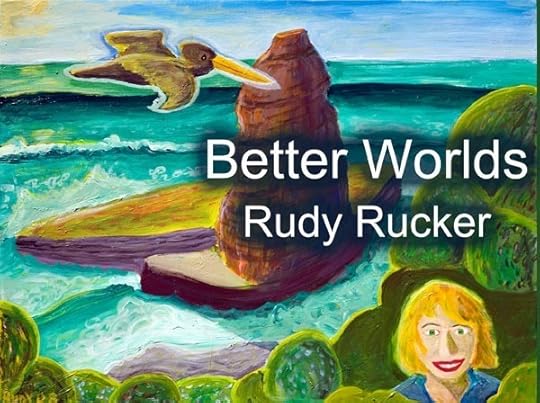
[Paperback cover.]
I have a paperback of Better Worlds coming out in a day or two as well. I used to sell this for $30 on Lulu, but I’m able to cut costs by using a different supplier, so now you can get it for $19.95 from Amazon or more directly from my CreateSpace page—see the links on my Transreal Books site.
And do think about buying a painting this July or August! My basement’s too full.
Sale on My Paintings
Last week I finished a new painting, God’s Eye.

“God’s Eye,” oil on canvas, June, 2012, 24” x 20”. Click for a larger version of the image.
More about “God’s Eye” below, but first let’s talk about my art sale. I’m painting at a good rate, about one a month, and my storage space is getting full.

So I’m running an art sale through July and into August. You can check out the individual works and the sale price-list at my paintings page. And note that you can buy prints via this page as well.
Here’s an overview image of my paintings.

Click for a larger version of the image.
Each of the paintings is signed, of course. Generally I paint the edges of the canvas so it can hang unframed, and I put my signature on the edge, as shown below.

Coming back to “God’s Eye,” I’ve always been intrigued by a certain image that one sees in old European churches—an eye inside a triangle. This icon also appears, of course, on the dollar bill. It’s meant to represent the all-seeing eye of God or perhaps the divine light within every object. In researching my novels with Bruegel and Bosch as characters, I got the impression that medieval people really did think God was watching them. So here I’ve painted the eye as looking down through clouds—like a spy-satellite. I made the “skin” in this image pink as a kind of joke on the fact that God is sometimes visualized as an old white man. What expression does the eye seem to have? I’d say it looks engrossed, with a possibility of becoming judgmental.

[Ebook cover.]
Still on the art promo front, I’ve made ebook and paperback versions of my art book, Better Worlds. It’s up to ninety-two paintings now. You can buy a high-resolution Kindle ebook from Amazon or get both the Kindle and EPUB formats, both in high-resolution, from my Transreal Books site.

[Paperback cover.]
I have a paperback of Better Worlds coming out in a day or two as well. I used to sell this for $30 on Lulu, but I’m able to cut costs by using a different supplier, so now you can get it for $19.95 from Amazon or more directly from my CreateSpace page—see the links on my Transreal Books site.
And do think about buying a painting this July or August! My basement’s too full.
June 27, 2012
Hypershadows from Hyperspace. San Juan Bautista.
Our daughter Isabel sent us a link to a video of the shadows of skateboarders. Their arms seem to grow or extrude from their chests, amoeba-style.
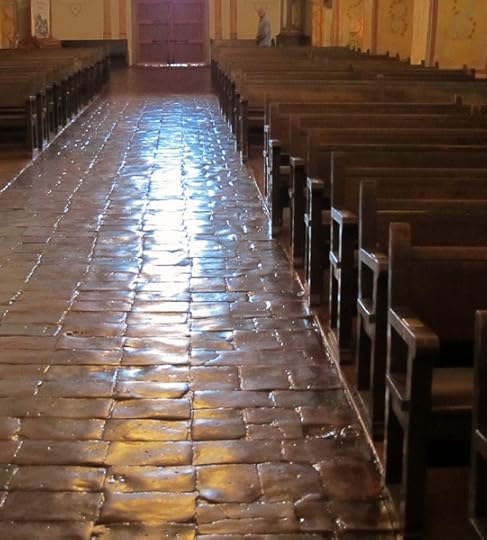
[In the Mission at San Juan Bautista.]
I think of a 4D version, with hyperskaters, and we sense their hypershadows as ghostly hologram-like blobs somewhat human in shape. Now now and then a sudden arm or tentacle can push out. The hypershadows are cast, not by our merely 3D Sun, but by a 4D “SUN” in hyperspace. The hypershadows aren’t exactly darkness.

[The obscure base of the waterfall at Castle Rock Park.]
Normally our space is filled with the divine light of that thing I like to call the SUN (all upper-case), and we don’t know it. The SUN shines upon us even during our night. We sense this glow not as light but as the all-is-One vibe of things, the vivacity of reality. That’s what’s fueled by the beneficent 4D rays of the SUN. The hypershadow of a hyperskater is a moving zone of desaturation and unreality. You don’t like being in a hypershadow.

[The East Side San Jose Vaqueros on a Sunday run in San Juan Bautista.]
I’m thinking about a Flatland analogy here. Kids are skating on Flatland. The Flatlanders don’t perceive the skateboard wheels, but they do notice the shadows. The skater shadows and the 3D sunlight penetrate into Flatland. The Flatlanders see these shadows not as darkness, but as a—chill. The shadows moves on and the glow returns.
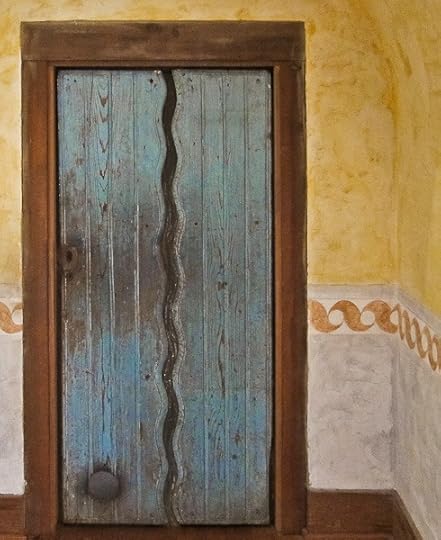
My wife and I made a run down to San Juan Bautista last weekend, hadn’t been there in maybe ten years. Very peaceful out in the country small town. Checking out the mission, the historical museum, the little shops, and the Sunday bikers.
Great live blues music pumping out of Mom and Pop’s Saloon, but we hesitated to go in and mingle with the partying San Jose Top Hatters, although they did seem quite mellow, as did the Vaqueros, in a different bar down the street.
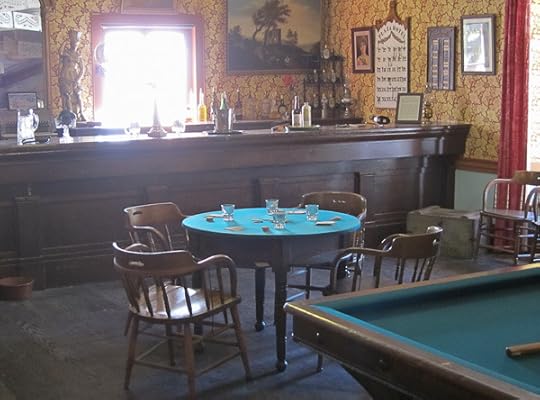
Saw a historical recreation of a saloon in the museum, though.
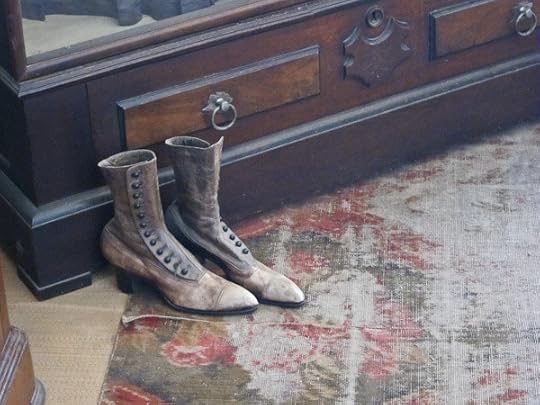
And some classic high-button shoes. Very goth, I’m thinking.

It’s amazing to get out in the country, maybe a 45 minute drive from home, the whole pace and vibe so sweet and calm. Beautiful view across the valley to the mountains. Why do I waste so much of my energy worrying about shit?

Clatter, click, there go those hyperskaters across the hypersurface of my space again, our world a Wild West false front, yellow-lit by the SUN.
And the eternal glow’s within us all.
June 15, 2012
Paperbacks of Craddock’s BE NOT CONTENT and Rucker’s COMPLETE STORIES
Transreal Books is now publishing quality paperbacks as well as ebooks. As well as our five ebook titles, we now have three volumes out in paper, with more to come.
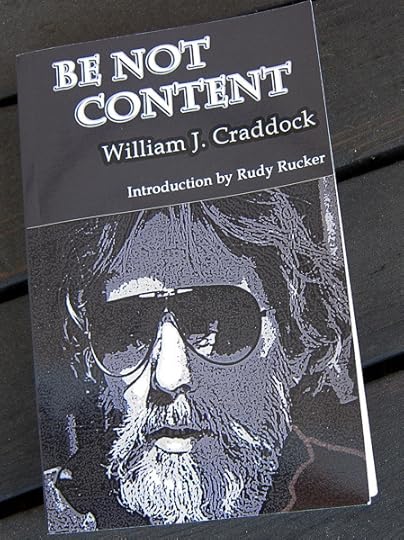
Be Not Content is a coming-of-age novel set in San Jose, California, in the mid 1960s—describing William Craddock’s experiences as a young acid-head. This is a hip, profound, and wonderfully-written book, a unique chronicle of the earliest days of the great psychedelic upheaval. Be Not Content is filled with warmth and empathy, tragic at times, and very funny in spots, a wastrel masterpiece where laughter plays counterpoint against the oboes of doom.
A mystical underground masterpiece, available for in paperback and ebook via Transreal Books. Or buy the paperback from Amazon.

All of Rudy Rucker’s science-fiction stories, a trove of gnarl and wonder in two volumes.
Complete Stories, Vol 1. includes stories from 1976 through 1995, ranging from the cyberpunk to the transreal. As well as Rucker’s solo stories, we have collaborations with Bruce Sterling, Marc Laidlaw.
Complete Stories, Vol 1. includes stories from 1996 through 2011, with fifteen previously uncollected tales. As well as Rucker’s solo stories, this volume features collaborations with Bruce Sterling, Marc Laidlaw, Paul Di Filippo, John Shirley, Terry Bisson, and Eileen Gunn.
Available as a single ebook or as two paperbacks via Transreal Books . Or get the paperbacks from Amazon: Volume One and Volume Two.
June 10, 2012
“The Great Big Beautiful Tomorrow”
I just read Cory Doctorow’s wonderful Outspoken Authors book The Great Big Beautiful Tomorrow. You can buy it or download it for free from Cory’s site. If you look around, you can even find a series of podcasts of Cory reading it.
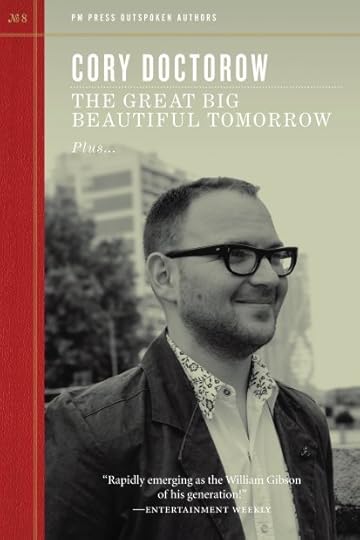
This slim volume includes an essay, an interview, and Cory’s novella, “The Great Big Beautiful Tomorrow.” I really enjoyed this tale—it’s modern, au courant, conceptually postsingular. One of the more interesting themes in SF these days is how life will be if and when we really get control over biotechnology in a really big way—big enough to use biotech to achieve the old goals of nanotechnology. Another theme is how things will be when we get a planetary networked computation that evolves into something like a local god.
One perennial topic in postsingular tales is how it might be to live within a “Vearth,” that is, to live as an more-or-less autonomous computational agent within a vast virtual-reality emulation of Earth. Some writers view this as a good thing, others not so much.

I think I’m not giving too much away if I say that at some point within Cory’s “The Great Big Beautiful Tomorrow,” some creatures called wumpuses are disassembling chunks of our planet and coding up the information patterns found within.
And at one point a character is living in a virtual reality that embodies the wumpus-extracted info. The Vearth-like computational engine has some bugs in it, but the character feels like it might be fun to carry on his life in there anyhow. Not that this person has much of a choice…
I tend to have persistent doubts that a world-sized VR could ever match real reality—or that there would ever be much point in trying to create it. And I’m going to explain my reasons below.
In 2007 and 2009 I published my pair of novels, Postsingular and Hylozoic, which took on some of these same ideas.
So now I’ll tell you a few of my thoughts, relating them to Cory’s novella. By the way, I published some of today’s rap in 2008, in a blog post called “Fundamental Limits to Virtual Reality,” . But I’m reposting them today in a re-edited form, fitting them to the flow of Cory’s novella.
So okay, let’s start. The first thing to keep in mind is that physical matter, just as it is, carries out outlandishly complex chaotic quantum computations by dint of sitting around. Matter isn’t dumb. Every particle everywhere and everywhen computes at the max possible flop. I think we tend to very seriously undervalue quotidian reality.
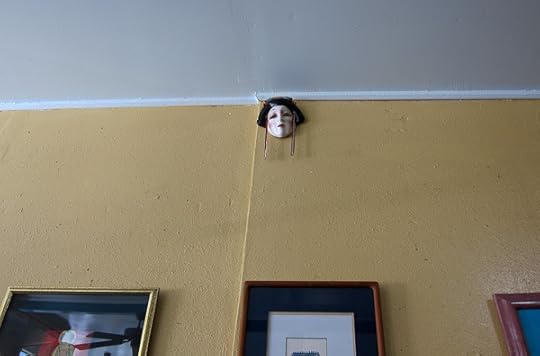
So there’s no reason to assume that a digital version of the world is in any sense “better.” Turning an inhabited planet into a VR simulation might be comparable to filling in wetlands to make a mall, clear-cutting a rainforest to make a destination golf resort, or killing a whale to whittle its teeth into religious icons of a whale god.
Advocates of the virtual-Earth scenario like to claim that nothing important need be lost when Earth is pulped into bits and bytes. Supposedly some vast computer network can run a VR simulation that’s a perfect match for the old Earth. Call the new one Vearth. But it’s not likely the match will be satisfactory.
Let’s take a moment to discuss the problems with trying to replace real reality with virtual reality. We already know that our present-day videogames and digital movies don’t fully match the richness of the real world. What’s not so well known is that no feasible VR can match nature because there are no shortcuts for nature’s computations. A VR simulation of Earth can only work if the simulation is running on a “computer” that’s about the same size as Earth was in the first place.

[Repousse medallion by Isabel Rucker.]
This is a limiting property of the natural world related to what I call the “Incompleteness Theorem for the Natural World.” The limitative aspect of the natural incompleteness theorem is that fully simulating a bunch of particles for a certain period of time requires a system using about the same number of particles for about the same length of time.
Putting it differently, naturally occurring systems don’t allow for drastic shortcuts. This means that if you build a computer-simulated world that’s smaller than the physical world, the simulation cuts corners and makes compromises, such as using bitmapped wood-grain, linearized fluid dynamics, or cartoon-style repeating backgrounds. Smallish simulated worlds are doomed to be dippy pseudo-environments populated by simulated people as dull and predictable as characters in bad novels.
But wait—if you get, let’s say, a race of Cory’s “wumpus” devices to repurpose a whole planet into computers, then you do have potentially as much memory and processing power as the old intact planet possessed. It’s the same amount of mass, after all. So then we could make a fully realistic world-simulating Vearth with no compromises, right?

Well, there’s another problem here. Maybe you can get the hardware in place, but there’s the vexing issue of software. Something important goes missing when you smash Earth into dust: you lose the information and the software that was embedded in the world’s behavior. An Earth-amount of matter with no high-level programs running on it is like a potentially human-equivalent robot with no AI software, or, more simply, like a powerful new computer with no programs on the hard drive.
Ah, but wait, Cory has a fix for this too. The wumpuses are going to copy all the patterns and behaviors embedded in Earth’s biosphere and geology, copying everything before they munge it into fodder for the Big Hack. The wumpuses record the forms and processes in every blade of grass, in every bacterium, in every pebble—like Citizen Kanes bringing home European castles that have been dismantled into portable blocks, or like foreign tourists taking digital photos of the components of disassembled California cheeseburgers.
Well, maybe this could work, but now we get to the issue of…why bother? If you want to smoothly transmogrify a blade of grass into some nanomachines simulating a blade of grass, then why bother grinding up the blade of grass at all? Keep in mind any object at all can be viewed as a quantum computation. The blade of grass already was an assemblage of nanomachines emulating a blade of grass. Nature embodies superhuman intelligence just as she is. So there’s not much point in making Nature into a copy of herself.

The long-term prospect I see as more attractive is one where, instead of turning nature into chips, we’ll turn chips into nature. I’m talking about the withering away of digital machines and the coming of truly ubiquitous computation. A Great Awakening.
The Great Awakening will eliminate nanomachines and digital computers in favor of naturally computing objects. We can suppose that our newly intelligent world will, in fact, have some “anti-wumpuses” to crunch up the digital machines, frugally preserving or porting all of that digital data, saving it as tastes, colors, smells, breezes, flames, and flows of water.
And then we’ll be able to tune in telepathically to nature’s computations. We’ll be able to commune with the souls of stones.
When you get right down to it, everything is alive. But Cory already knows this. What makes “The Great Big Beautiful Tomorrow” so engrossing is that, more than being about tech, it’s about the emotions and the personal growth (or lack thereof) of several inextricably linked human beings. That’s the beating heart of the story, an ingredient that an SF writer can all to easily forget too include! The human wheenk.
June 4, 2012
Hype and Anti-Hype
Hype and Anti-Hype
I’ve been lost in a fog of hype for months now—what with promoting my Nested Scrolls autobio this winter, putting out Flurb #13 and converting it into an ebook, and recently spending all my time getting my Transreal Books line going.
Not to mention tweeting and blogging. And layering on link tags all over the place.

[Terry Bisson]
I even put out some hype for someone other than myself this week, a book review of Terry Bisson’s great alternate history memoir, Any Day Now. The review is in this interesting new online literary journal, the Los Angeles Review of Books—meant to be a kind of left-coast mirror of the august New York Review of Books.
On the subject of hype, I’ve heard media figures say that they get into trouble when they start believing their own hype. I mean I’ve heard rappers say that, anyway. What is the nature of the danger, exactly?
Maybe, if I believe the hype, I don’t feel a need to even try to write, as I think I’m already so great. Maybe, if I believe my hype, then I’m not willing to put in the work it takes to write because I’m too “important” for the thousand-miles-on-foot slog of writing a novel.

Or maybe, if I believe the hype, I do still want to write, but I become blocked—because nothing I actually do write lives up to the hype? That is, maybe if I believe the hype, when I try and get to work, I freak out over the very real disparity between the contingent and mortal quality of what I actually do write vis-a-vis the much higher quality that my hype ascribes to my oeuvre.
Or, yet again, maybe I am still able to write but, believing the hype, I get lazy and begin neglecting the necessary but painful work of outlining, revision, scientific theorizing, and pre-visualization—this happens to older writers sometimes.
Or perhaps, if I believe my hype, I lose my sense of humor and become pompous and self-referential. “Fatuous,” to use an apt word that I’ve heard Bruce Sterling use (when arguing with me about some revisions to one of our many collaborative short stories). Fatuosity is another danger for established writers.

[Two mayflies in conjugation]
I’m hoping soon to get away from the hype and back to my actual work. Giving the finger to consensus reality. Turning my back on received ideas—even if they come from me.
As I’ve already kvetched in these posts, one thing that’s holding me back from writing at this point is that I don’t feel like working on my new novel, The Big Aha , until I find a path for publishing my last one, The Turing Chronicles. If I don’t get something set up by the end of June, I’ll probably publish The Turing Chronicles via my own line of Transreal Books, just to get it off my back. It’ll be a bit of a blow to my self-esteem to join the ranks of the self-published novelists. But that seems to be the way the wind’s blowing. I heard the other day that the august house of Houghton-Mifflin is bankrupt. Leaving more and more writers scrabbling in the gutter with the literary lepers…

Bringing us to the theme of anti-hype. Somewhere (although I can’t find the exact location) Thomas Pynchon writes that a certain kind of seeker (mystic, writer, or artist) needs an “unwiltable hard-on” of ambition. (Let’s suppose this can apply to female seekers as well, the “hard-on” being, after all, metaphorical—a psychic dildo, if you will.)
In a similar vein, there’s a saying attributed to Rabbi Hillel, “If I am not for myself, who will be?” (Hillel complicates matters by adding on, “If I am only for myself, what am I? And if not now, when?”)
To some extent, I like to think that, if nobody hates what I’m doing, then I’m not going far enough. But if everybody hates what I’m doing—gosh, maybe I’m on a wrong path. But so far, there’s always been a few loyal friends or fans who approve of what I’m doing. So I continue on, largely unchanged.
And there’s always the bitter SubGenius motto: “F*ck them if they can’t take a joke.”

What about the strategy of trying to bend your work to be a better fit for the market? That tends not to work. You get into playing catch-up ball, to use *ack* a sports metaphor, and your style suffers. Or your style stays the same, but nobody believes your claim that you’ve written a steampunk or urban fantasy or whatever kind of book.
I once heard someone ask William Burroughs why he didn’t “just” write a bestseller to make some money. The old master said that something like the following:
“It’s not possible. People may think they can sit down and write a bestseller, but you can’t do it. A bestseller is written up to the level of a man’s ability. You can’t write down to the reading public.”

[Rudy at the Met]
Whatever else it is, writing is pleasant, addictive, and a path to self-knowledge. It’s just nice to have an excuse for doing it. I always seem to find some kind of project to work on, even if it’s not a novel. So what am I writing these days? Well, I’m polishing up my Journals, 1990-2012, getting them into a format that I can publish via, ta-da, Transreal Books. Ebook and paperback, probably.
So for now I’m puttering around, getting those the half million or so words wrestled into a reasonable shape. It’s passing the time in any case.
May 31, 2012
Comparing Writing and Painting
Some analogies between writing and the visual arts (drawing and painting). I may have posted some of this before, don’t remember anymore, but I’ve revised it a bit today. Here we go.
(i) When drawing, I get some quick sketch in pencil, then ink it in, then have to white out pieces and redraw them. Or if I’m painting, the same thing, I just rough it out in light paint and see if it’s the right shape. I don’t actually have the ability to draw a person so they look exactly right on the first go. When painting I pick away at it with my brushes and colors until it looks okay.
In writing I try and write a rough version of the section pretty quickly, then go over it and tune it, and then there will be things that don’t work that I have to keep redoing. But eventually I feel it’s right. Versimilitude is a process, not a one-shot thing. And (side-point) photo-realism isn’t the only goal.

[A likeable punk roadie for The Recently Deceased, seen at the Anarchist Book Fair in Golden Gate Park.]
(ii) In drawing, whenever there’s a part I’m confused about—something tricky like two hands holding each other—I end up having to use lots and lots of white-out. Or if I’m painting I rub off paint and layer new paint over. And it ends up all bumpy and crufty and never does look as smooth and clean as the rest of the picture.
In writing, the transitions or actions I’m not clear about take the most rewriting and reworking. But I don’t think it’s necessarily true that a rewritten patch has to be bumpy and crufty as does a redrawn patch; in drawing the bumpiness is partly a result simply of the not-so-great physical properties of the white-out, or in painting it has to do with whether or not I bother to sand off the bumpy impasto layers beneath. But maybe gnarly cruft is okay too.
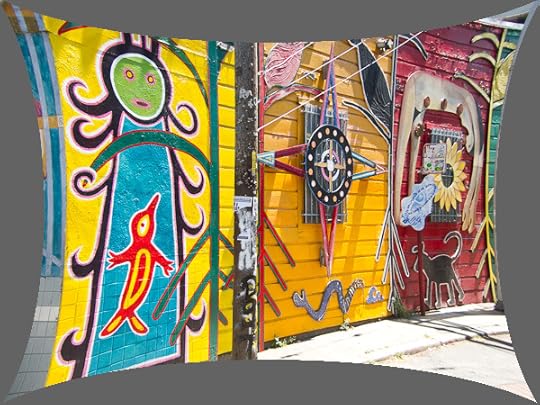
[Street murals in Balmy Alley off 24th St. in SF.]
(iii) When drawing or painting, I sometimes think that if only I could take the time to fully visualize the difficult passage then I’d be able to draw it clean and right the first time. But often it just seems too hard to think, and I go ahead and draw it or paint it wrong, just so I have something to work off of.
In writing, I’ll often think that if only I could fully think through a scene I could write it much more effectively. But many times it’s just too hard to think all that—I’ll feel like being active, in touch with the medium, so I just go ahead and write even though I’m not sure what I’m doing. And then I take it from there.

(iv) In both mediums, I need to realize that something that might have the superficial appearance of a finished piece, but that it’s really still a sketch or a first layer that needs to be reworked. I’m kind of surprised how prolonged a process it is to make a drawing or what I consider to be a finished painting. I hadn’t realized it would take so much revision. By long experience, I’m of course familiar with the huge amount of revision that a written scene takes. It’s kind of comforting to see that visual art can be just as hard.
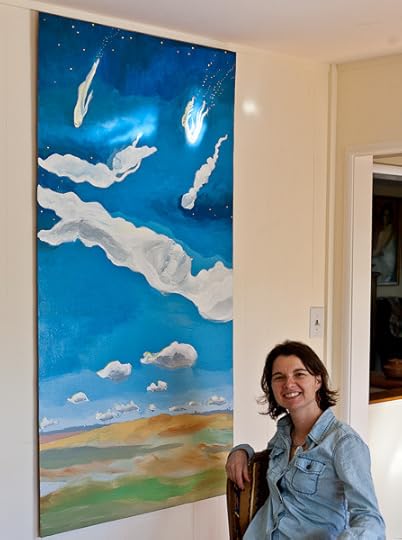
[Clouds’ Point of View , painting by Isabel Rucker.]
(v) My old art mentor Paul Mavrides says about art in general, “It’s not the realistic style that matters so much. It’s having something to say.” And this makes me feel free to write a little more cartoony and sketchy sometimes. Or to be more expressionistic in a painting. And in writing this idea helps me fight my feeling of being inferior to a fine literature exponent who creates beautifully textured descriptions and aperçus in a work that perhaps doesn’t have all that much to say.

[Copa Loca ice-cream parlor in the Mission.]
(vi) I worship the notion of “eyeball kicks,” as in the early cartoons by Will Elder in Mad and Panic. Elder’s eyeball kicks are, to me, of a piece with the piled-on detail of Bosch’s teeming works. A higher apotheosis is reached in the later Bruegel where there’s still very much action, but the surface doesn’t teem and wriggle, it’s harmonious and integrated. And this I try and fill up the surfaces of my canvases.
And Will Elder, Bosch and Bruegel have always been touchstone icons for the kinds of novels I want to write. Over the years I’ve felt like my writing has gotten closer to this ideal. It’s a matter of taking your time…without losing the thread.

[View of SF from McLaren Park, reminds me of the crystal city in the background of a Bosch painting of Saint Anthony (not the triptych one).]
(vii) One problem in painting or in writing is how to suggest the endless levels of Nature’s span and detail while only using a square meter of canvas or a hundred thousand words. Painting and drawing use the trick of perspective at the high end. At the low end, a painter can use the fact that the fractal structure of paint is like the fractal structure of plants and dirt.
Writing uses the trick of narrative at the high end—suggesting a universal theme. At the low end, writing uses the telling detail, especially the cunningly selected and seemingly random detail. At first it doesn’t look like writing owns a shortcut fractal trick like paint-scumbling. But the fractal, multiply-linked nature of language is the Muse’s gift to writers. I’m thinking about the way that a word can mean so much more than it ought to. Just those few little letters hook into so many associations. A well-chosen phrase manages, like a skillful glob of paint, to signify more than itself.
May 29, 2012
My Complete Stories in Paperback
A trove of gnarl and wonder! Complete Stories is now available in paperback from Transreal Books. Two volumes, over 500 pages each.
$16.00 Volume One, 1976-1995
Ranges from the cyberpunk to the transreal, including collaborations with Paul Di Filippo, Bruce Sterling and Marc Laidlaw.
$16.00 Volume Two, 1996-2011
This volume includes fifteen previously uncollected tales. Features collaborations with Bruce Sterling, Marc Laidlaw, Paul Di Filippo, John Shirley, Terry Bisson, and Eileen Gunn.
See the Transreal Books page for the ebook options.
(And, yes, I still expect that William J. Craddock’s Be Not Content will be out in paperback soon, assuming I can straighten out some final details.)
Rudy Rucker's Blog
- Rudy Rucker's profile
- 583 followers




